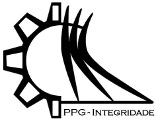QUANTIFICAÇÃO DA INCERTEZA DA VIDA DE PLACAS DE AÇO SOB À FADIGA VIA POLINÔMIOS DE HERMITE
DOI:
https://doi.org/10.26512/ripe.v2i16.21626Keywords:
Polinômio de Hermite Multidimensional. Fadiga. Quantificação da incerteza. Metodologia deformação-vida.Abstract
O objetivo deste trabalho é quantificar a incerteza no número de ciclos para falha por fadiga de componentes entalhados por meio do uso de polinômios de Hermite multidimensionais. A metodologia deformação-vida de estimativa de vida à fadiga é adotada e considera-se como variáveis aleatórias as propriedades do material e os níveis do carregamento aplicado. O uso de séries de polinômios de Hermite multidimensionais permitiu a predição da aleatoriedade do vetor de saída (número de ciclos para falha). Demonstra-se que um polinômio de Hermite multidimensional é capaz de estimar de forma adequada a propagação das incertezas associadas à s variáveis de entrada. Os resultados sugerem que incertezas nas propriedades do material e no carregamento podem resultar em variações significativas no número de ciclos para falha de componentes sujeitos à falha por fadiga.
References
Adomian, G. (1980). Applied Stochastic Processes. First. Vol. 1. New York: Academic Press.
Bannantine, J., J. Comer e J. Handrock (1989). Fundamentals of metal fatigue analysis. New York, State United: Prentice Hall.
Berveiller, M., B. Sudret e M. Lemaire (2006). “Stochastic finite elements a non-intrusive approach by regression”. Em: European Journal of Computational Mechanics 15.1-3, pp. 81”“92.
Blatman, G. (2009). “Adaptive sparse polynomial chaos expansions for uncertainty propagation and sensitivity analysis”. Mestrado em Engenharia Civil. Clermont-Ferrand: Universite Blaise Pascal, p. 222.
Blatman, G. e B. Sudret (2008). “Sparse polynomial chaos expansions and adaptive stochastic finite elements using a regression approach”. Em: Comptes Rendus MÃl’canique 336.6, pp. 518”“523.
”” (2010). “An adaptive algorithm to build up sparse polynomial chaos expansions for stochastic finite element analysis”. Em: Probabilistic Engineering Mechanics 25.2, pp. 183”“197.
”” (2011). “Adaptive sparse polynomial chaos expansions based on Least Angle Regression”. Em: Journal Computational Physics 230.6, pp. 2345”“2367.
Doll, J. e D. Freeman (1986). “Randomly Exact Methods”. Em: Science 234.4782, pp. 1356”“ 1360.
Ghanem, R.G. e P.D. Spanos (2003). Stochastic Finite Elements: A Spectral Approach. United State: Dover Publications.
Ghiocel, D. e R. Ghanem (2002). “Stochastic Finite Element Analysis of Seismic Soil Structure Interaction”. Em: Journal Eng. Mechanics 128.1, pp. 66”“77.
Hosder, S. e R.Walters (2010). “Non-Intrusive polynomial chaos methods for uncertainty quantification influid dynamics”. Em: 48th AIAA Aerospace sciences meeting including the new horizons forum e aerospace exposition. Orlando, USA.
Huang, S., B. Liang e K. Phoon (2009). “Geotechnical probabilistic analysis by collocation based stochastic response surface method an EXCEL add in implementation”. Em: Georisk 3.2, pp. 75”“86.
Iman, R. e W. Conover (1980). “Small Sample Sensitivity Analysis Techniques for Computer Models, with an Application to Risk Assessment”. Em: Communications in Statistics-Theory and Methods 9.17, 1749â˘A ¸S1842.
Isukapalli, S. S. (1999). “Uncertainty Analysis of Transport Transformation Models”. PhD thesis. New Jersey, United State: The State University of New Jersey, p. 141.
Keese, A. e H. Matthies (2005). “Hierarchical parallelisation for the solution of stochastic finite element equations”. Em: Journal Computers and Structures 83.14.
Le-Maitre, O.P. e O.M. Knio (2010). Spectral Methods for Uncertainty Quantification: With Applications to Computational Fluid Dynamics. London, UK: Springer.
Maitre, O. et al. (2001). “A stochastic projection method for fluid flow I basic formulation”. Em: Journal of Computational Physics 173.3, pp. 481”“511.
Morrow, J. (1965). “Cyclic plastic strain energy and fatigue of metals”. Em: ASTM STP 378.1.1, p. 45.
Neuber, H. (1961). “Theory of stress concentration for shear-strained prismatical bodies with arbitrary nonlinear stress-strain law”. Em: Journal of applied mechanics 28.1, pp. 544”“550.
Papoulis, A. (1991). Probability, Random Variables, and Stochastic Processes. First. Vol. 1. New York: McGraw-Hill.
Phoon, K.K. e S.P. Huang (2007). “Uncertainty Quantification Using Multi-Dimensional Hermite Polynomials, ASCE 2007, pp. 1?10.” Em: J. ASCE 1.1, pp. 1”“10.
S-K. Choi, R. Grandhi e R. Canfield (2007). Reliability-based structural design. London: Springer.
Socie, D., N. Dowling e P. Kuranth (1984). “Fatigue life estimation of notched members”. Em: ASTM STP 833 833.1, pp. 284”“299.
Sudret, B. (2007). “Uncertainty propagation and sensitivity analysis in mechanical models : Contributions to structural reliability and stochastic spectral methods”. PhD thesis. Clermont Ferrand, France: UniversitÃl’ Blaise Pascal, p. 173.
Sudret, B. e A. Der-Kiureghian (2000). Stochastic Finite Elements and Reliability: A State of the Art Report. Rel. téc. University of California, Berkeley.
Tatang, M. (1995). “Direct Incorporation of Uncertainty in Chemical and Environmental Engineering Systems”. PhD thesis. Cambridge, MA: Massachusetts Institute of Technology, p. 141.
Villadsen, J. e M. Michelsen (1978). Solution of differential equation models by polinomial approximation. Englewood Cliffs, NJ.: Prentice-Hall.
Webster, M., M. Tatang e G. McRae (1996). Application of the Probabilistic Collocation Method for an Uncertainty Analysis of a Simple Ocean Model. Rel. téc. MIT Joint Program on the Science e Policy of Global Change Reports Series No. 4, Massachusetts institute of Technology.
Xiu, D. (2009). “Fast Numerical Methods for Stochastic Computations A Review”. Em: Communications in Computational Physics 5.2-4, pp. 242”“272.
”” (2010). Numerical Methods for Stochastic Computations. New Jersey: Princeton University Press.
Xiu, D e J S Hesthaven (2005). “High Order Collocation Methods for Differential Equations with Random Inputs”. Em: SIAM J. Sci. Comput. 27.3, pp. 1118”“1139.
Downloads
Published
Issue
Section
License
Given the public access policy of the journal, the use of the published texts is free, with the obligation of recognizing the original authorship and the first publication in this journal. The authors of the published contributions are entirely and exclusively responsible for their contents.
1. The authors authorize the publication of the article in this journal.
2. The authors guarantee that the contribution is original, and take full responsibility for its content in case of impugnation by third parties.
3. The authors guarantee that the contribution is not under evaluation in another journal.
4. The authors keep the copyright and convey to the journal the right of first publication, the work being licensed under a Creative Commons Attribution License-BY.
5. The authors are allowed and stimulated to publicize and distribute their work on-line after the publication in the journal.
6. The authors of the approved works authorize the journal to distribute their content, after publication, for reproduction in content indexes, virtual libraries and similars.
7. The editors reserve the right to make adjustments to the text and to adequate the article to the editorial rules of the journal.









